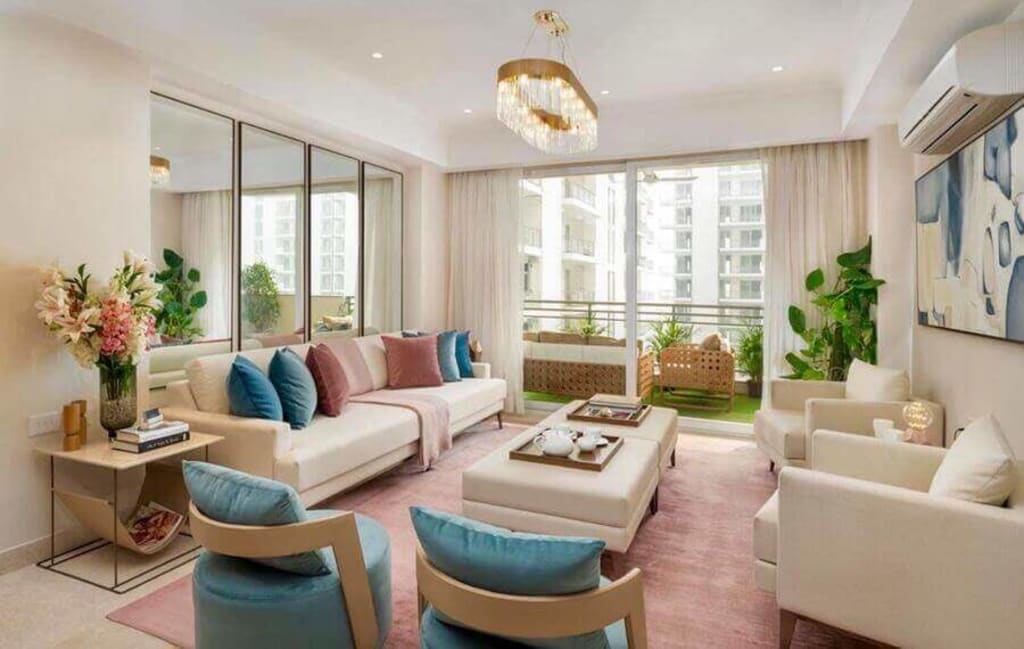15 Interesting Facts about Interior Decor that will Inspire You to Know More
Interior design is any type of design of a building or structure, and involves multiple elements like specific room layouts, desks, chairs, work of art, etc.

Interior design is a nuanced art of creating the right atmosphere for indoor spaces to exude a psychological comfort for those residing in it or visiting. This is done by using multiple important elements of interior design like color, light, furniture, raw materials, structural materials, negative space, etc. These are carefully selected, coordinated, and arranged in a way that is both aesthetically satisfying and practical. Factors like comfort, aesthetics, efficiency, economy and durability play a big part in interior design. We are always engaging with interior decor, even when we don’t know it
Here are a few broad interior design tips and tricks as well as facts that will inspire you to know more about this constantly evolving creative field:
- Interior design is never the same in two countries or even two regions of a country. A lot of factors influence interior design, like the weather, the surroundings, availability of raw materials, culture, heritage, religious beliefs, methods of transportation, economy, colonial impact, etc., which then go on to shape the respective region or country’s interior design trends.
- Interior design is an art form, and like any art form, it also speaks to a person. When a structure has been properly designed, it expresses the personality of an individual, their tastes, possible demeanor, social standing, style quotient, economic standing, and so much more. The building or a space then becomes a mouthpiece of an individual or an organization, as the case may be.
- The impact of interior design on us humans is often underestimated as it has a direct effect on the mental well-being of a person/people. Even scientific studies have shown that when patients in a hospital are placed in beautiful rooms that are well ventilated and have a beautiful view from the window, their mental health greatly elevates, forcing the body to follow. More windows in a room have also shown to ultimately alleviate any acute or even chronic pain.
- Colors have a deep physiological impact on people. Every color invokes something different. So, interior designers choose colors based on the vibe of the space they are creating and the energy they want it to exude. Usually, green and lavender shades are considered to have a soothing effect and contribute to a healthy and peaceful household.
- Speaking of colors, did you know that Benjamin Moore’s White Dove OC-17 has been the most popular interior design color for the past 10 years? It exudes unparalleled calmness and hence, continues to be a favorite amongst home owners and interior designers.
- Apart from aesthetic details in architecture, interior designers also have to be mindful of ethical details and regulations that are to be complied with. For instance, accessibility for the disabled, proper conspicuous fire exits, etc. have to be prominently included in the design. This implies that interior designers have to be proficient with design rules and regulations of buildings.
- While handmade rugs may seem like an afterthought at first, interior designers consider it a remarkable medium to bring a space to life. Rugs anchor a room and help transform it immediately, and they also determine how comfortable the setting of the room can be. When investing in rugs for a space, interior designers take into consideration the climatic conditions of the region to choose a rug of a suitable material. Rugs come in different styles, patterns, designs, colors, pile heights, materials, and sizes, and the choice truly is democratic as there are thousands of beautiful options to choose from. Some interior designers even rely on rugs to be the foundation piece for the interior decor.
- Did you know that some colors induce productivity, and blue tops the list? This is why many corporate offices use the color blue in their decor. Along with blue, green and yellow are also said to contribute to the feeling of confidence in individuals and promote productivity in organizations.
- In that same vein, studies state that incorporating green and natural elements in an office design improves the work productivity by 15%. Natural elements allow people to feel calm and concentrated. The presence of windows and natural light is also helpful in an office setting for the employees to feel motivated.
- Along with colors, smell also helps in creating the mood of a space. Using fresh and delightful fragrances elevates a person’s mood and also creates a welcoming atmosphere for everyone present. Brands also use a particular fragrance as it helps create a strong identity for a brand/company based on a distinct smell.
- Lights, lights, and lights! How you illuminate a space determines how the space will look, feel, and how accessible it will be. Every kind of setting requires different lighting to fit the scenario. For example, when in a home environment, ample bright lights may not be as important as they are in commercial spaces like malls, stores, etc. It is also important in office settings so that the employees have ease of sight and don’t have to strain their eyes.
- If you are using ‘interior design’ and ‘interior decor’ interchangeably, you are mistaken as decor is just one aspect of interior design. Interior design is a more expansive concept than interior decor which evaluates, researches, coordinates, and scientifically uses a given space while keeping practicality and visual aesthetics in consideration.
- Placements of objects in a room, which is a part of deciding a room’s layout, is very important when it comes to both aesthetics as well as the functional view. A cluttered or de-cluttered space can go a long way in determining how you are feeling in the room. Moods such as feeling unproductive and unmotivated or, on the other spectrum, fresh and relaxed can all be impacted by the placement of objects in a room. This is why interior designers pay a lot of heed to utilizing a space intelligently to bring out its personality as well as the functionality.
- Like they say, the devil is in the details, and it is no different when it comes to interior decor. Every little aspect of the composition of a space count. After the basic foundation is done, the interior designer breathes life into every corner with the help of thoughtful details in terms of texture, material, finish color, design as well as placement to make it look and feel the closest to the client’s brief.
- Last, but not the least, interior design helps create a space where you are the creative mastermind. For a space to come to life, it is important that it is shaped after individual taste and not industry trends solely in order to shape the space in a way that is unique to them. Interior design is a tool to make a space reflect one’s inner self, their personality and their beliefs. Interior in itself means ‘inner’, therefore implying that designing is a way of shaping a space after yourself while also being functionally aware and taking into consideration other utilitarian and aesthetic considerations.
About the Creator
Klaudia Hubbard
I am a marketing consultant and content writer. I also work as a freelance journalist, travel writer, and social media strategist. When not dabbling away, I enjoy reading, hiking, and doodling.






Comments
There are no comments for this story
Be the first to respond and start the conversation.